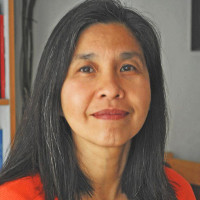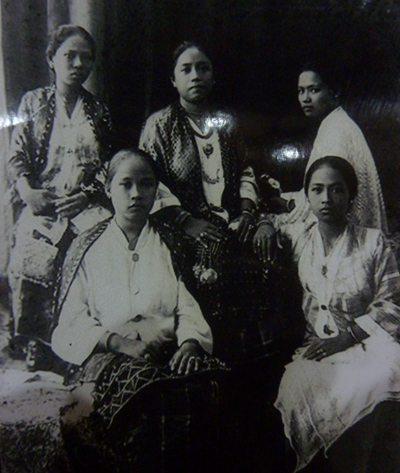SUMMARY
This is AI generated summarization, which may have errors. For context, always refer to the full article.
 The last sultan of Sulu had been unable to sire an heir. In his long reign of power over an archipelago that had been feared and envied in the region, he had more than 100 women who tried but failed to bear him a child that might have changed the course of his people’s destiny.
The last sultan of Sulu had been unable to sire an heir. In his long reign of power over an archipelago that had been feared and envied in the region, he had more than 100 women who tried but failed to bear him a child that might have changed the course of his people’s destiny.
Jamalul Kiram’s death in June, 1936, marked the downfall of a kingdom, and other political events – American colonial rule and the emergence of a Philippine Commonwealth – precipitated the end of a glorious era as it was known. From then on the genealogy that was to predict succession went haywire.
His favorite and equally powerful niece, the Princess Piandao, could have ruled if women had been allowed, thus ensuing a huge palace intrigue over a power play among the royal families that divided the throne. That story has long been buried in the shrubs of Maimbung on Sulu island, the road to which, in the present-day insurgency, has been notorious for banditry.
It’s there, the broken and somber traces of the “Astana,” the specter of an empire that could have remained separate from what would eventually constitute a republic. Kiram’s grave lies there, alongside his niece’s, its neglect and ignominy symbolizing much of what our country sweeps away of the past. In my last visit there in early 2010, a Marine detachment was set up in the premises, cultivating a vegetable plot, and small commerce in the community appeared to be proliferating.
The confusion following Kiram’s death (from illnesses in old age, it was said) shifted the drama to the other side of Sulu island, in Patikul, where the Aberin royal family had substantial claim to the throne as well. Another niece of the deceased sultan, the American-educated Tarhata who was too modern for her time, had married a son of the Aberins in an attempt to balance power.
But in the end, whoever crowned himself sultan was overtaken by the hands of power in Manila, which was to be the center that dictated new rules of the political game.
As we would know it now, Patikul would be a place synonymous to the dreaded Abu Sayyaf rebel group holding its base there. The showbiz celebrity Aga Muhlach may not have known that when he featured just last month an unprecedented two episodes set in Patikul for his TV travel show, “Pinoy Explorer,” bringing forth a renewed optimism for tourism potential and cultural understanding, albeit managed by the Marines and a local non-government organization.
What the show, fun and promising as it were, had missed was a decrepit stilted house inconspicuous on the coast, claiming itself as the leftover sultanate of the Aberin descendants, hidden too among the coconut trees; and that where they filmed the show was a keg of history telling the fate of rebellions and armed conflicts.
It was the Kirams who held on tenaciously to the dreams of the past, drawing followers here and there, putting up makeshift “offices” in corners of Sulu and Tawi-Tawi that the military suspected were a recruitment center, and steadily trying to speak out over other voices drowning theirs, for they were not seeing what many others have come to accept – that the sultanate is long dead.
Princess Piandao had received a sizeable portion of the British payment for the “rent” of Sabah, which the sultanate had leased to the British North Borneo Company in the days of the colonies having their slice of the Sulu-Celebes maritime swath. Like her uncle, Piandao did not have a child and died of cancer after the Second World War, effectively leaving the other cousins and their families to divide what was left of the spoils.

Sabah as clutch
Sabah became their clutch when their own Sulu was sinking, so to speak, from the heavy weight of bloodshed that spiraled into poverty. Sabah became the vision of the last gold coin that could win back the possibility of rising again, getting back the worth of a name, the venerable House of Kiram. Many in the family have dispersed from Sulu and quarrels abound.
It seems rather ironic that many of those who followed Datu Agimodin Jamalul Kiram in last Thursday’s standoff in Sabah came from the island-town of Simunul in Tawi-Tawi province, a hop away from the Malaysian state of Sabah. Tawi-Tawi had separated administratively from Sulu province in the 1980s; this and the other islands of the southern archipelago, as far as Palawan, had formed the sultanate’s domain.
It was there where the Philippine military had secretly recruited mostly illiterate Muslims to stage allegedly an internal disturbance that was meant to give the government the upper hand in reclaiming Sabah, by force if necessary. This blew up into a political scandal known as the “Jabidah Massacre,” an event the military has not owned up to until today, but it has remained an open secret, a stigma on the deaths of some Muslim recruits who tried to mutiny.
This was said to be the crucial factor that sparked the Muslim separatist rebellion in the early 1970s, whose leaders were a brand of ‘activists’, as the Moro National Liberation Front was called, that did not want anything to do with the influence of the royal structures of the past and received clandestine support from Malaysia. The Sulu capital of Jolo was burned to the ground when the military quashed an uprising 39 years ago this month, and the island has sunk even further more, with peace hardly reached in the running insurgency since then.
As it goes, it’s a tale of one army after another; this time we hear of this, the Royal Sulu Sultanate Army – but it’s nowhere near the warriors of the sultanate’s golden age in the 17th and 18th centuries. What we have these days underlies, sadly, the foretold misery of Sulu. – Rappler.com
A journalist, Criselda Yabes has published 5 books, including the non-fiction “Sarena’s Story: The Loss of a Kingdom,” which won in the 2008 Gawad Likhaan UP Centennial Awards, and “Below the Crying Mountain,” which was shortlisted in 2010 for the Man Asian Literary Prize.
Click the links below for more opinion pieces in Thought Leaders:
Add a comment
How does this make you feel?
There are no comments yet. Add your comment to start the conversation.